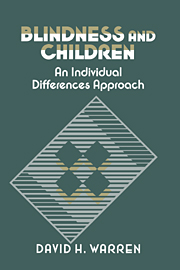Book contents
- Frontmatter
- Contents
- Preface
- Introduction
- Part I Interaction with the physical world
- Part II The acquisition of cognitive skills
- Part III Adapting to the social world
- 8 Social–emotional and communicative development in infancy
- 9 Language as a social skill
- 10 Social development and adjustment
- 11 Developing a sense of self
- Part IV Summary
- Conclusion
- References
- Author index
- Subject index
10 - Social development and adjustment
from Part III - Adapting to the social world
Published online by Cambridge University Press: 02 December 2009
- Frontmatter
- Contents
- Preface
- Introduction
- Part I Interaction with the physical world
- Part II The acquisition of cognitive skills
- Part III Adapting to the social world
- 8 Social–emotional and communicative development in infancy
- 9 Language as a social skill
- 10 Social development and adjustment
- 11 Developing a sense of self
- Part IV Summary
- Conclusion
- References
- Author index
- Subject index
Summary
The terms “social development” and “social adjustment” can be distinguished at a technical level. The former refers to the process of development as social characteristics change with age, whereas the latter refers to the quality of the child's adjustment to the demands of the social environment, without necessarily being indexed to age considerations. In practice, however, the literature does not maintain a sharp distinction, and it is not feasible to do so here. As a matter of practical organization, we will consider first the research that has concentrated on the evaluation of the social development and adjustment of children as measured by standardized tests. Then we will move to work that has attempted to identify the dynamics of family-based variation in social characteristics. A third section will cover issues more directly related to variables in the school situation. Finally, we will look at the brief literature on the development of social morality.
Social development and adjustment scales
Several standardized scales have been used to assess the social development and adjustment of children with visual impairments. Although their primary use is diagnosis for individual children, these instruments have also proved to be a rich source of information about the normative characteristics, as well as the variation, of the population of children with visual impairments.
The Vineland Social Maturity Scale, developed by Doll in the 1930s, has been used as an indicator of overall social development in children with visual impairments, although it was originally designed for use with sighted children.
- Type
- Chapter
- Information
- Blindness and ChildrenAn Individual Differences Approach, pp. 247 - 283Publisher: Cambridge University PressPrint publication year: 1994



